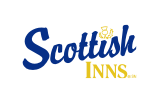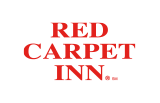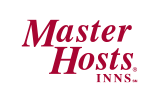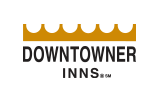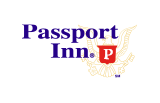By Ruben Reyes, Assurance & Marketing Program Director
According to AAA, more than 50 million travelers were expected to hit the road for the Thanksgiving holiday this year, and 95% of these vacationers were expected to travel by car. These travel statistics reached pre-pandemic levels and were just 4% below 2019 levels, according to the U.S. Travel Association. I can attest to a small percentage of these numbers, as I was on the road and noticed that hotels along my destination route were at an occupancy of 80% or higher and had increased their rates by more than 20%. This business trip also took me along the U.S.-Mexican border, where I noted that many hotels had been at a high occupancy for quite some time due to an increase in border security personnel in the area. In addition, IHG released its half-year report indicating a significant improvement in demand over the course of Q1, resulting in RevPAR of +43% vs. 2019 and +20% vs. 2020.
So, is this an indicator that business is going to start to recover more rapidly for the lodging industry than first predicted? Or is the new variant going to loom over our industry and cause a panic that will have a negative impact? The truth is that no one knows, and the best advice that I may pass on to any hotelier is to use your revenue management skills to help capture your fair share of your market while you maintain a strong and stable ADR. One of the most valuable tools at any hotelier’s disposal is his/her profit and loss statement. Your P&L report is essential for the success of your hotel, as it casts a light on where your profits are coming from and where your expenses are going toward. Remember that your variable costs moving forward will have a significant impact due to the COVID-19 pandemic. This is obviously due to the lack of the current workforce, as many hoteliers struggle to find staff and, as a result, are starting to outsource labor or an increase in costs to promote a safer and more sanitary product.
Your P&L statement provides an analysis of each department’s performance and will help you to identify trends for your future expenses. If viewed regularly, it will help you to identify financial performance weaknesses and strengths and forecast occupancy levels and service demands. You may then act accordingly to make improvements by cutting hotel costs where needed or by working on making improvements to areas that are showing a loss in revenue or hotel performance, and obviously forecast your future rates. You may find that some variable costs may turn into fixed costs as the demand for safety products and protocols become the norm, so don’t be afraid to think outside the box; hoteliers are not only known for their resiliency but for their ability to come up with effective ways to cut back on costs while continuing to offer great guest services.
Creating a profit and loss statement is not very difficult; your accountant may have a template, or you may find a free one online that is usually set up in the form of an Excel spreadsheet. A P&L statement basically tracks how your hotel does on a regular basis. It may be tracked monthly, quarterly or annually. Most P&L statements are the same for most businesses, but the lodging industry is governed by a different set of standards. A Uniform System of Accounts for the Lodging Industry was established in 1926 (USALI) and it changes from time to time. As a result, several editions exist, and the purpose was to standardize the operational statement for the hotelier and for the hotel staff. (Please note: for the purposes of this article, I am going to stick to the basics.)
The initial part of your hotel’s P&L are the details of your hotel’s operational revenue – i.e., RevPAR, the hotel’s occupancy and your Average Daily Rate. (Please note: these factors will be used as your occupied rooms sold guide.) Also included in these initial revenue details is revenue from different Points of Sale (POS), such as pet fees, parking fees, long distance charges and food & beverage, if applicable.
Unfortunately, owning and operating a hotel comes at a cost; yes, it is not all cupcakes and puppy dogs in our industry. These expenses are the costs that are incurred to run and maintain the property. They include, but may not be limited to, labor, maintenance supplies, soft goods and now the added cost of keeping your hotel clean and safe due to the pandemic with the cleaning of high touch points and disinfecting supplies. Best practices in managing these expenses are to control them so they do not have a negative effect on your bottom line. These expenses, much like your operational revenue, may be broken down into departments such as sales and marketing, maintenance and added labor and cleaning supplies. And don’t forget to add your variable costs, which will fluctuate depending on your occupancy.
Therefore, examining your breakeven point and assuring that you are maximizing the sale of each occupied room is crucial. You do not want to sell a double room at the same rate as a single with more than two guests. Remember, the more guests who occupy a room, the more utilities, consumables and labor are needed for that extra guest. These expenses are considered distributed expenses, and when reviewing them, it is best not to concentrate on the dollar amount, but rather on the percentage that the cost has incurred on a given item, as the percentage of the item is basically an efficiency ratio.
Payroll should be your main concern. It is, on average, 50% of your operational expenses and needs to be scrutinized now more than ever due to the pandemic. Remember, labor will fluctuate with a higher-than-normal occupancy. If you have budgeted $10 for each available room sold and you have sold X number of rooms for a RACK of $100, then the payroll for each room sold is 10 cents for every dollar of that room sold.
At this point, you are close to the finish line, as you will now subtract your total expenses from your operational revenue to determine the hotel’s gross operating profit. But keep in mind that this is just an example; your fixed costs may include attorney’s fees, insurance, a second lien or that pesky new Tesla company car payment. Using a P&L is a great way to determine where your hotel needs improvement to help you show a positive return on your investment.

